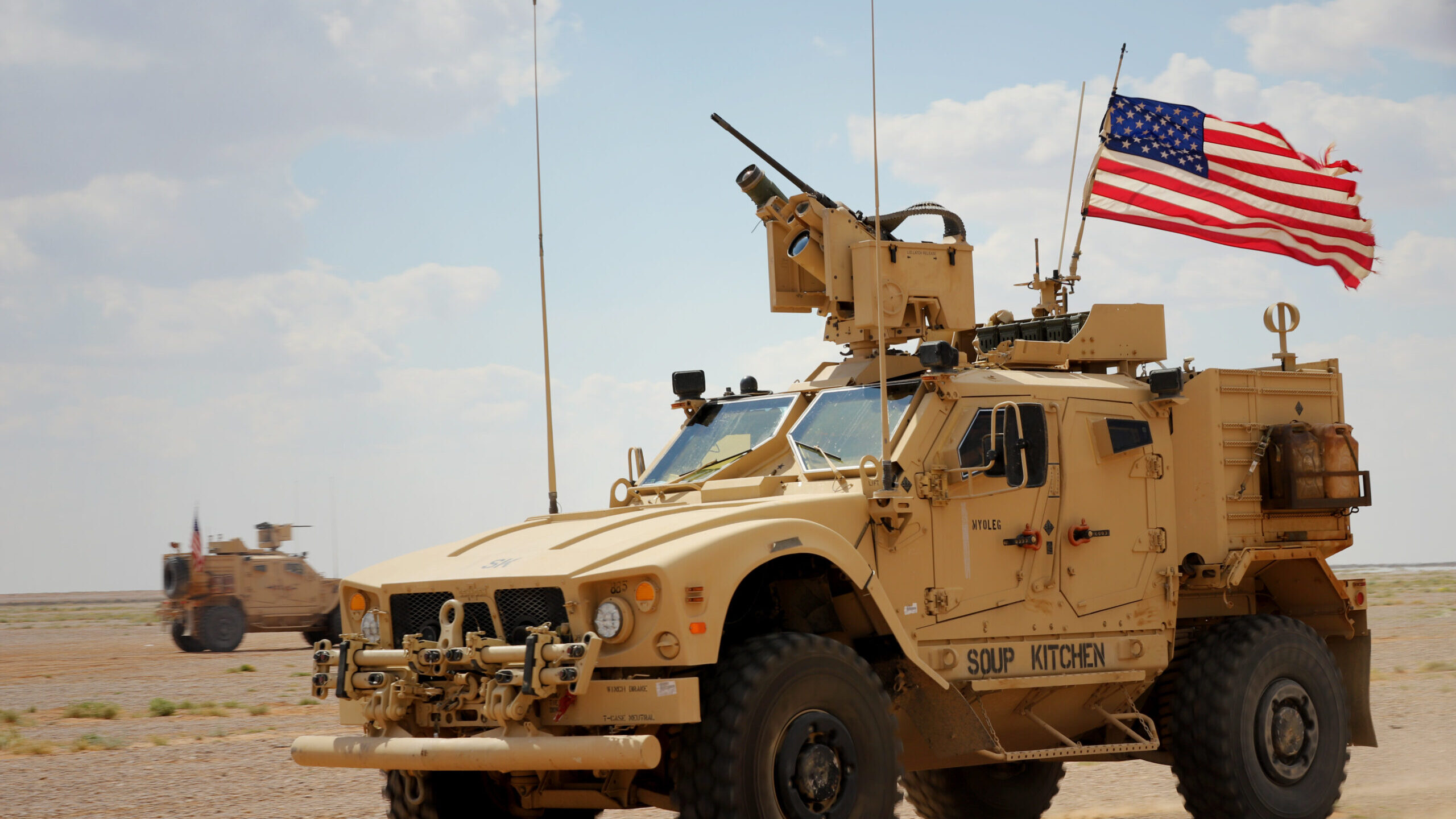ARIE EGOZI

TEL AVIV: With the US now pointing the finger at Iran as the source of last week’s armed drone attack against American forces in Syria, government sources here are casting the situation as part of a broader Iranian-led expansion campaign in Syria — with armed drones serving as the main weapon.
US officials told the Associated Press that as many as five drones, equipped with explosive charges, hit the al-Tanf military base in Syria on Oct. 20. According to the AP report, Iran “resourced and encouraged the attack,” but the drones were not launched directly from Iranian territory. No American forces were killed in the attack.
Israeli sources have also pointed the finger at Iran-backed militias; those same sources are raising concerns that American forces in Syria and, to some extent, in Iraq are not equipped properly to deal with the growing number of armed drone strikes, which have emerged as a regular tactic for Iran over the last year.
“The Iranians use the armed drones, operated by their many proxies, as a way to cause casualties to the American forces by using what is still considered a secondary weapon system,” an Israeli defense source told Breaking Defense. The source added that that the Iranian drones are carrying increasingly larger warheads and now, in the Ministry of Defense’s view, pose a legitimate threat to American forces.
According to Israeli defense sources, some 350 military members and civilians are still using al-Tanf, including some British and French forces that were described as “intelligence experts.”
While concerned about the health of its closest partner, Israel also has parochial interests in Syria — namely, keeping Iranian influence out. While the government here has kept details of strikes into Syria quiet, Syrian media and open intelligence analysis have shown a history of strikes from Israeli assets into the country.
Those attacks have been complicated in recent months by Russia’s more protective stance against Israeli strikes, an issue that government sources say was raised in an Oct. 22 meeting between Israeli Prime Minister Naftali Bennett and Russian President Vladimir Putin.
Israeli sources claim that following the meeting, the Russians asked Israel to give them an earlier warning before future air strikes in Syria. Two days after the meeting, Israel, according to Syrian media, attacked a site of the Syrian army and “its affiliates” that caused great damage.
Mordechai Kedar, a senior Israeli expert on Middle Eastern issues, believes Syria is becoming an “Iranian neighborhood,” which has severe implications for Israel. Iran is “now flooding the southern part of Syria near to the border with Israel [with militia members], and that is something that Israel cannot accept,” he said.
When looking at potential threats, the possibility of suicide drone strikes arranged and organized by Iran is rising quickly up Jerusalem’s list. Israel’s concern spiked following the signing of a recent agreement between Iran and Syria on military and technological collaboration. Mohammad Bagheri, Chief of Staff of Iran’s Armed Forces, travelled to Damascus for the signing ceremony, where he met with Syrian President Bashar al-Assad; media quoted Bagheri as saying, “From now on Iran will strengthen its ties with Syria even more, on all levels.”
Offer Haruvi, a leading Israeli expert on UAVs and drones, said he believes the government here is investing wisely in counter-drone technologies, but noted that these advanced systems are still in the early stages. Ideally, such systems “can first detect the threat and then eliminate it by crashing it with taking control on its flight or shooting it down,” he said.
Syria isn’t the only concern in the region when it comes to armed drones purportedly back by Iran. In Yemen, the main fire power of the Houthi rebels is their Iranian-made UAVs, either armed with bombs for air-to-ground strikes or used as loitering munitions, according to a report prepared by the Israeli Institute for National Security Studies (INSS).
According to research by the INSS’s Ari Heistein and Elisha Stoin, the Houthis “have an extensive arsenal of UAVs, including long-range Samad models. The group used Samad UAVs for long-range attacks in 2018 (Abu Dhabi) and then again in 2019 (Riyadh). However, the Samad-3, which claims an operational range of 1,800 km – theoretically enough to conduct attack on Israel – will have limited ability to inflict damage on Israeli infrastructure, given its 45 kg warhead.”
The researchers note that in March 2021 the Houthi military industries unveiled a Samad-4 model with a claimed range of 2,000 km and greater firepower, as well as a loitering munition referred to as the Wa’id UAV. “These latest developments indicate a potential leap forward in the Houthi arsenal of weapons capable of striking Israel,” the researchers say.
While the Houthis have not yet used their armed UAVs to attack Israel they performed some attacks on Israeli owned cargo ships. The last one claimed the lives of two crew members
No comments:
Post a Comment